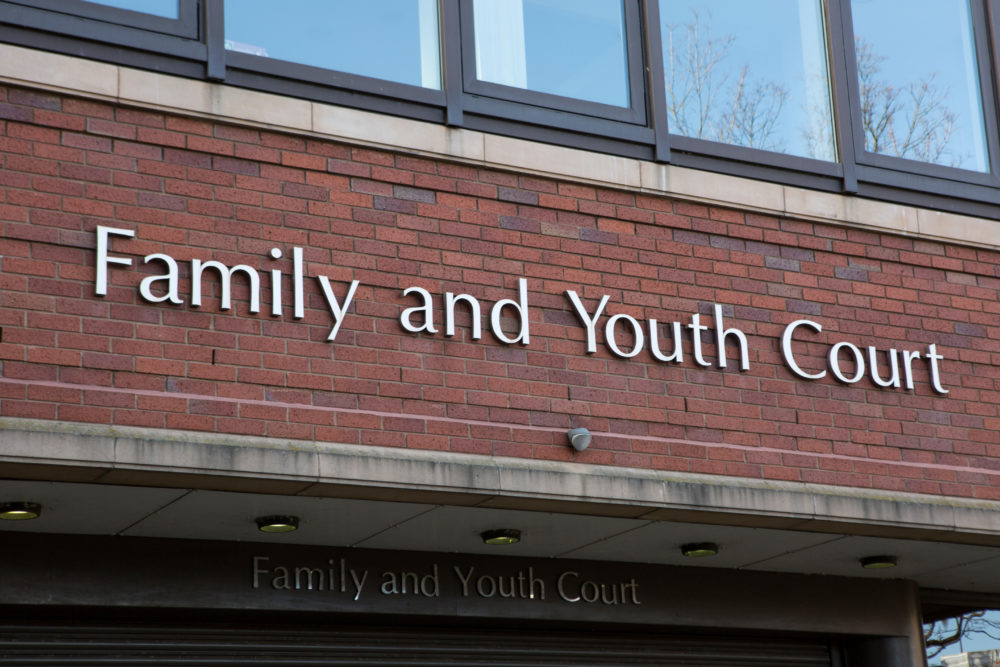![]() For more than 40 years, teen courts across the 50 states have proven their success at letting high school students — serving as lawyers, jurors, bailiffs and judges — determine the real-life sentences of alleged juvenile offenders who are their peers.
For more than 40 years, teen courts across the 50 states have proven their success at letting high school students — serving as lawyers, jurors, bailiffs and judges — determine the real-life sentences of alleged juvenile offenders who are their peers.
Having created several teen courts in Kentucky, I know that such programs doubled as a pre-law apprenticeship for high school students, while also aiming to divert juvenile offenders from incarceration.
Judges who preside over juvenile courts often have acknowledged that what happens in those proceedings amounts to a stern lecture to young, low-level offenders. They see teen court as a refreshing approach that allows offenders to be judged by individuals their own age, who have had similar life experiences. And young offenders are responsive to that dynamic. They are fully engaged in proceedings that are not rote and scripted. They've watched as teen prosecutors argue for maximum terms and teen defense attorneys cite reasons why sentences should be lenient.
Some of our strongest and most steadfast teen court participants, including jurors, actually had had prior offenses resolved through the teen court process. They freely acknowledge the second chance and are grateful that they weren't marred by a criminal record that might damage their future.
Aspiring lawyers are recruited for teen court
Led by prosecutors and defense attorneys and presided over by an actual, adult judge, highly structured teen courts orient students on the roles of lawyers, court clerks, bailiffs and jurors. When they complete the training, students are sworn to an academic year of service by court judges in a formal ceremony attended by parents and members of the community.
All participants are sworn to confidentiality; they may be removed from the program and subject to sanctions if they violate this confidentiality. Some states require teen court participants to pass an exam prior to being sworn to service.
Though it varies by state, generally, offenders referred to teen court are between the ages of 13 and 17 and have been charged with such low-level, nonviolent offenses as theft by unlawful taking, criminal mischief, harassment, criminal trespassing, disorderly conduct and so forth. A teen court participants decide whether and how a teen defendant should be sentenced, they are operating under the idea that judgement by ones peers can have a positive effect, encouraging law-abiding behavior and community engagement. The ideas is that teens are highly sensitive to peer opinion.
Dispositions made in teen court typically include community service, restitution, apologies, counseling, educational programs and other alternatives. In the Kentucky programs I established, teen defendants always were required to return to serve on a teen court jury, reinforcing pro-social engagement with peers.
If a judge accepts a teen court jury’s ruling on a case, it is binding and becomes part of the record. Offenders who comply with the terms rendered by the teen court jury may have their case settled without it becoming part of court records. Cases of those who don’t comply may be sent to juvenile court and resolved there.
The wins in this program are unparalleled. Rates of compliance with teen court dispositions generally are high; rates of recidivism are low. The program also provides excellent lessons in corrective and procedural justice and fosters the development of enlightened, engaged citizens. For multiple years in high school, many teen court participants serve the court and, ultimately, seek admission to law school or other related field in the justice system.
Teen court and other apprenticeships have increased in number
Teen courts can be strengthened even further by incorporating them into a pre-apprenticeship or federally recognized registered apprenticeship program.
Apprenticeships provide a paycheck, on-the-job training and related classroom instruction. Apprentices who successfully complete their training get a recognized, portable credential and, often, some college credit.
Registered apprenticeship has grown 70% the United States over the last 10 years. And according to the federal Bureau of Labor Statistics, the paralegal and legal assistant professions are projected to grow 12% between 2020 and 2030, faster than the average for all occupations. That translates into 43,000 para-professional jobs per year for the next several years.
One approved apprenticeship in the field – paralegal – mirrors the tasks participants in teen court already do:
- Preparing and managing legal documents.
- Meeting with individuals involved in a legal proceeding to either clarify or gather additional information.
- Coordinating schedules and activities in legal proceedings.
- Representing the interest of clients in legal proceedings.
- Mediating disputes between parties.
If these skills were incorporated into a teen court registered apprenticeship, participants could turn an informal job route into a solid career pathway.
Given the success of both teen court and apprenticeship, it would seem wise for leaders in both areas to align their efforts and create a teen court apprenticeship that would give young people career opportunities in the fast-growing and well-paid legal sector.
Deborah Williamson is vice president of special projects and operations at the Institute for Workplace Skills and Innovation America. Previously, among other posts, she was general manager of juvenile services for the Kentucky Court of Justice.
